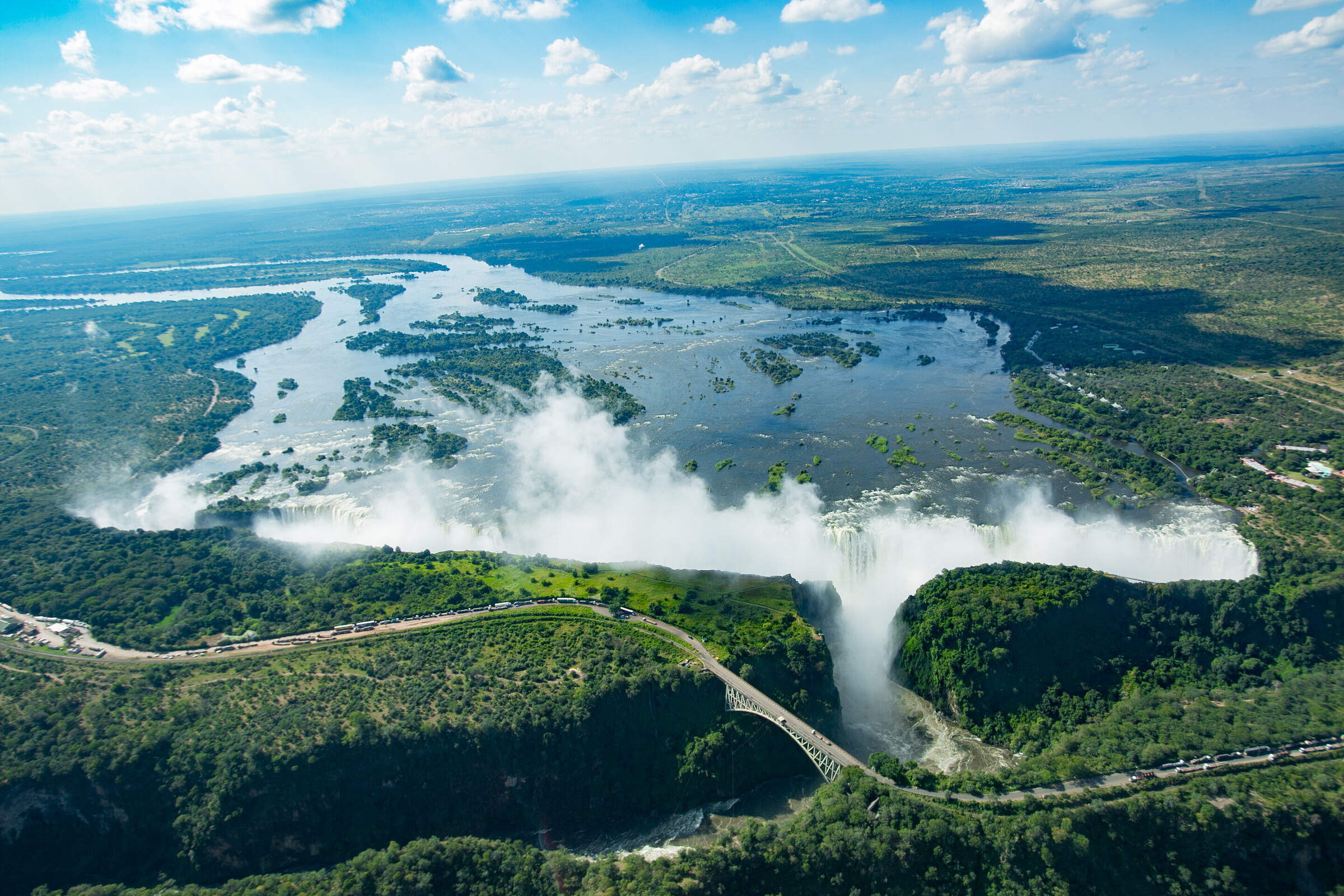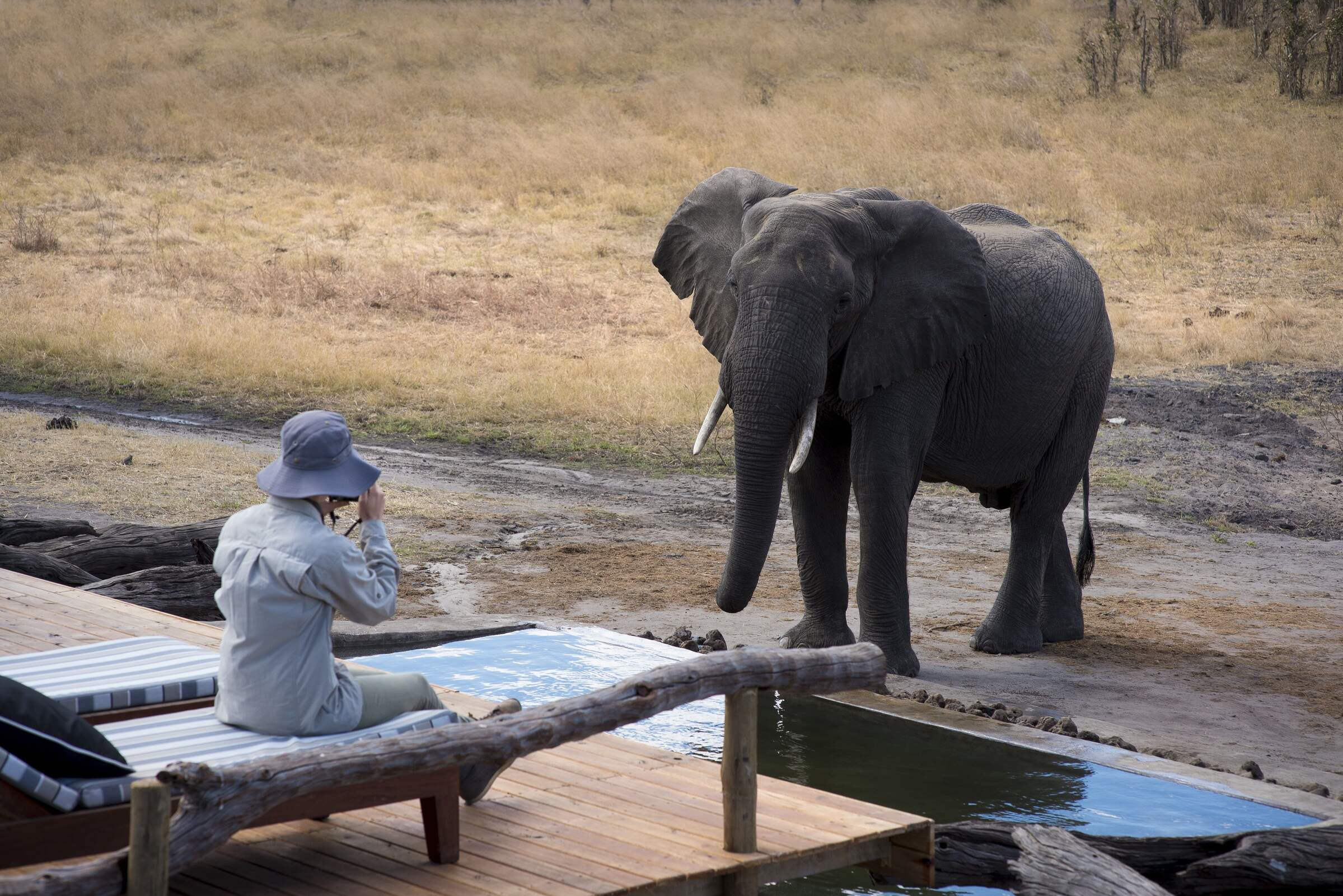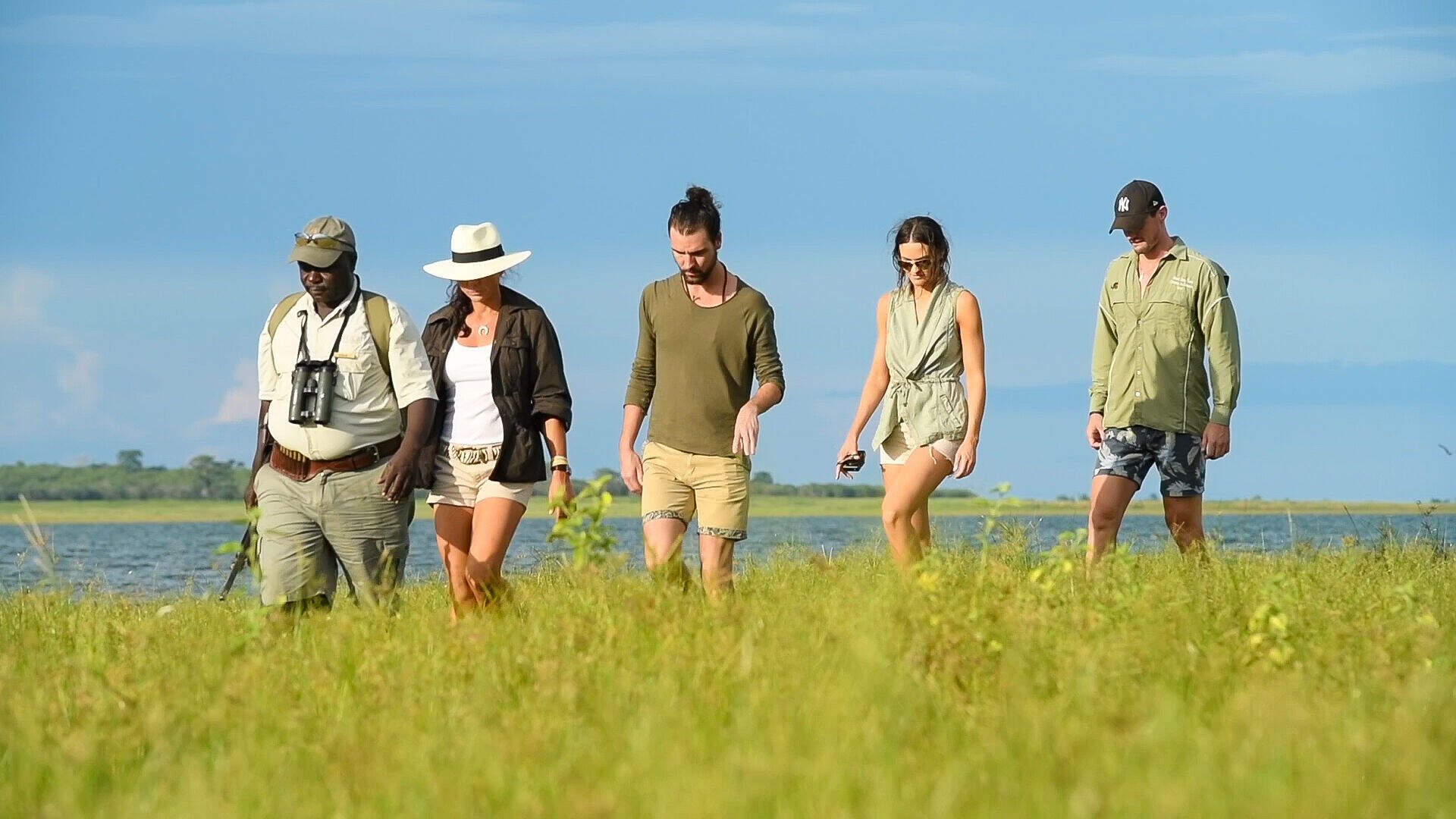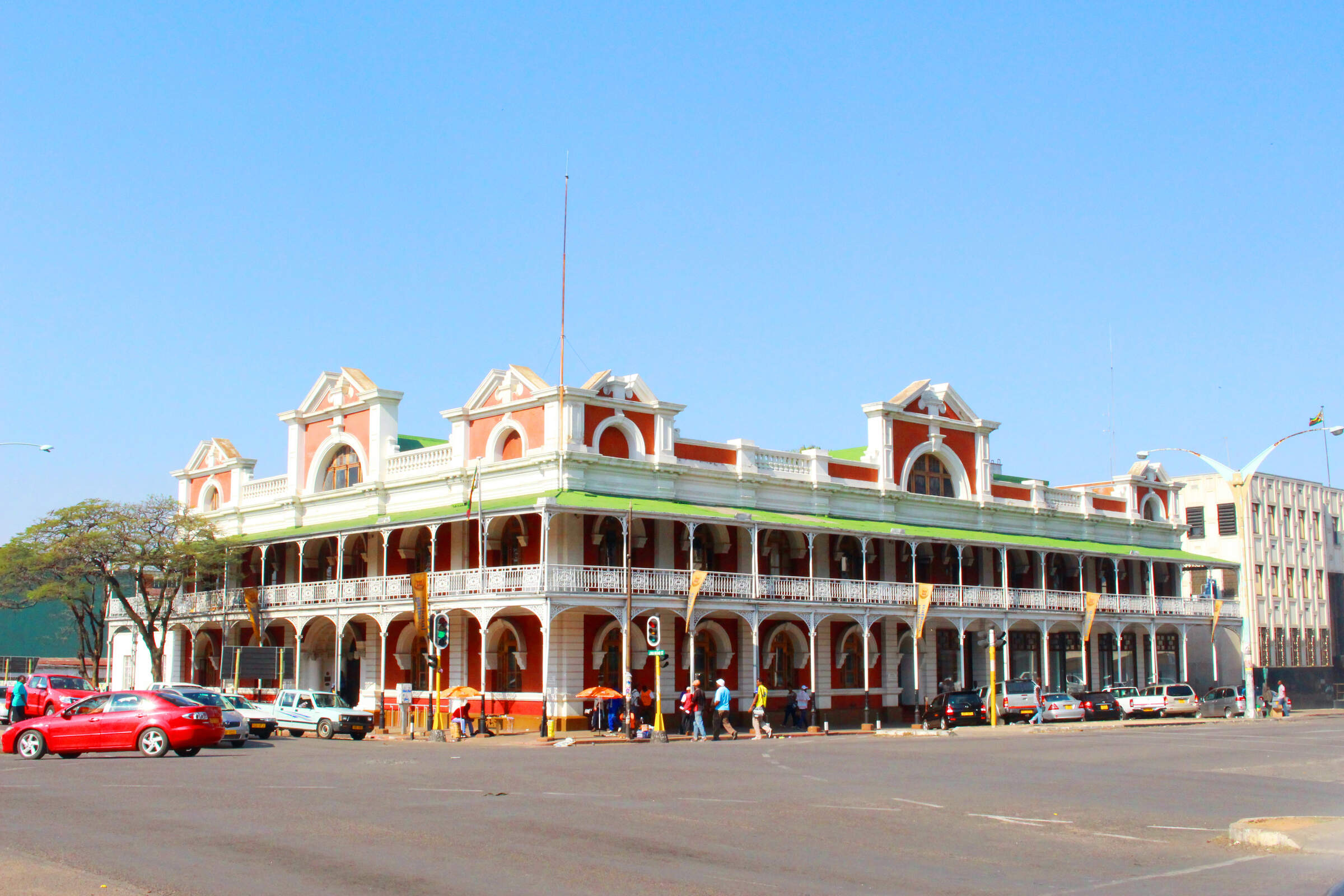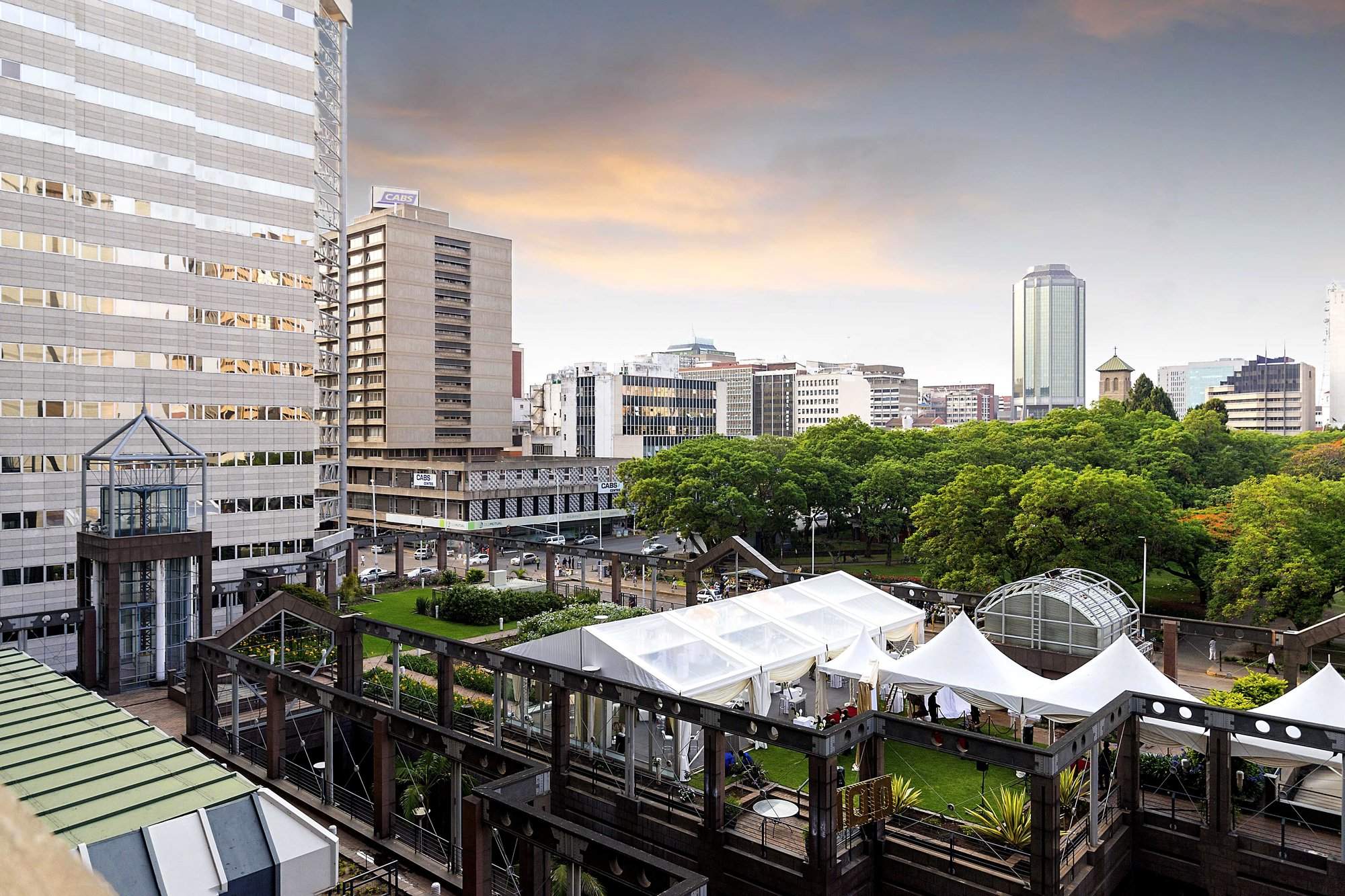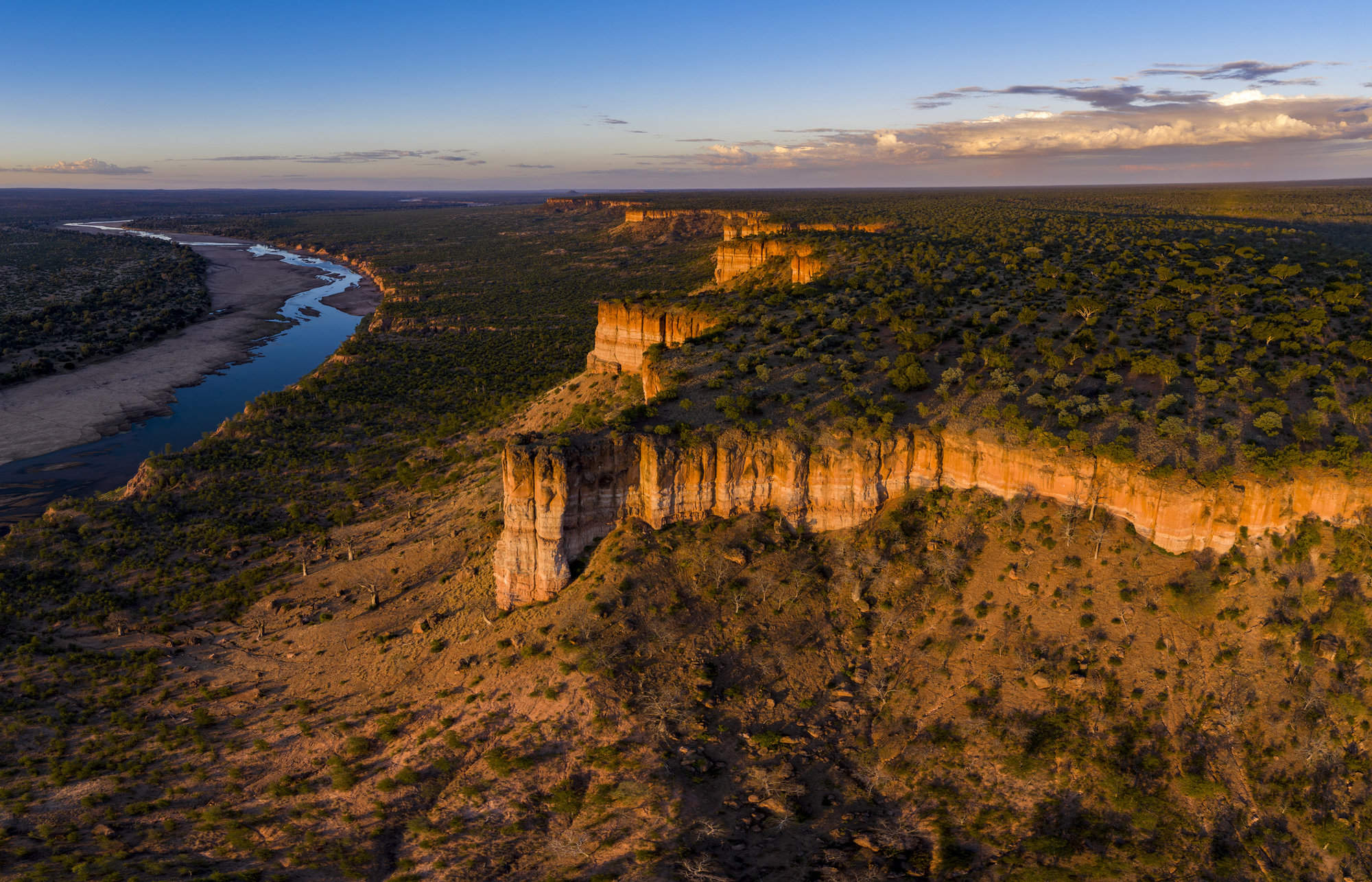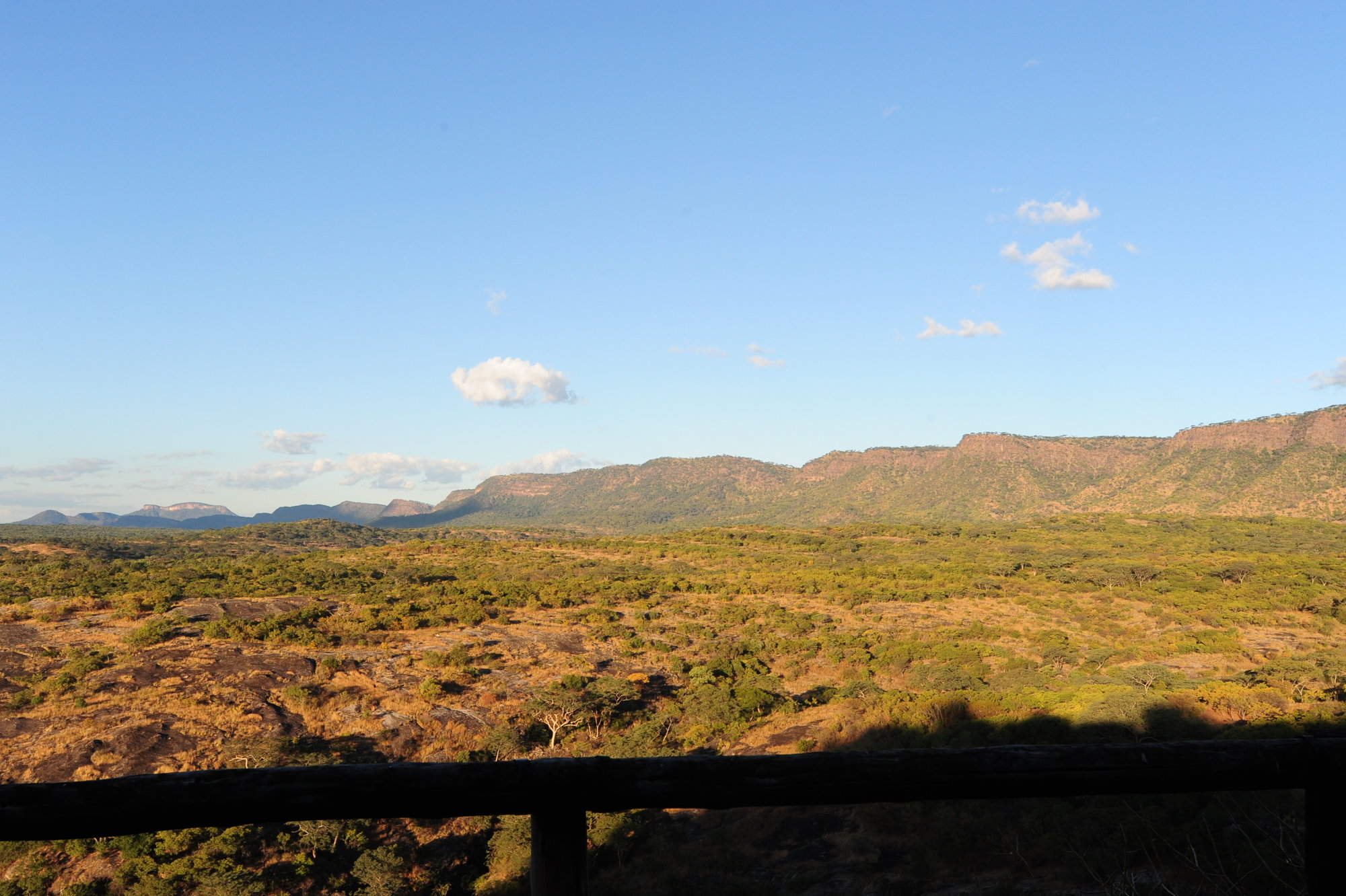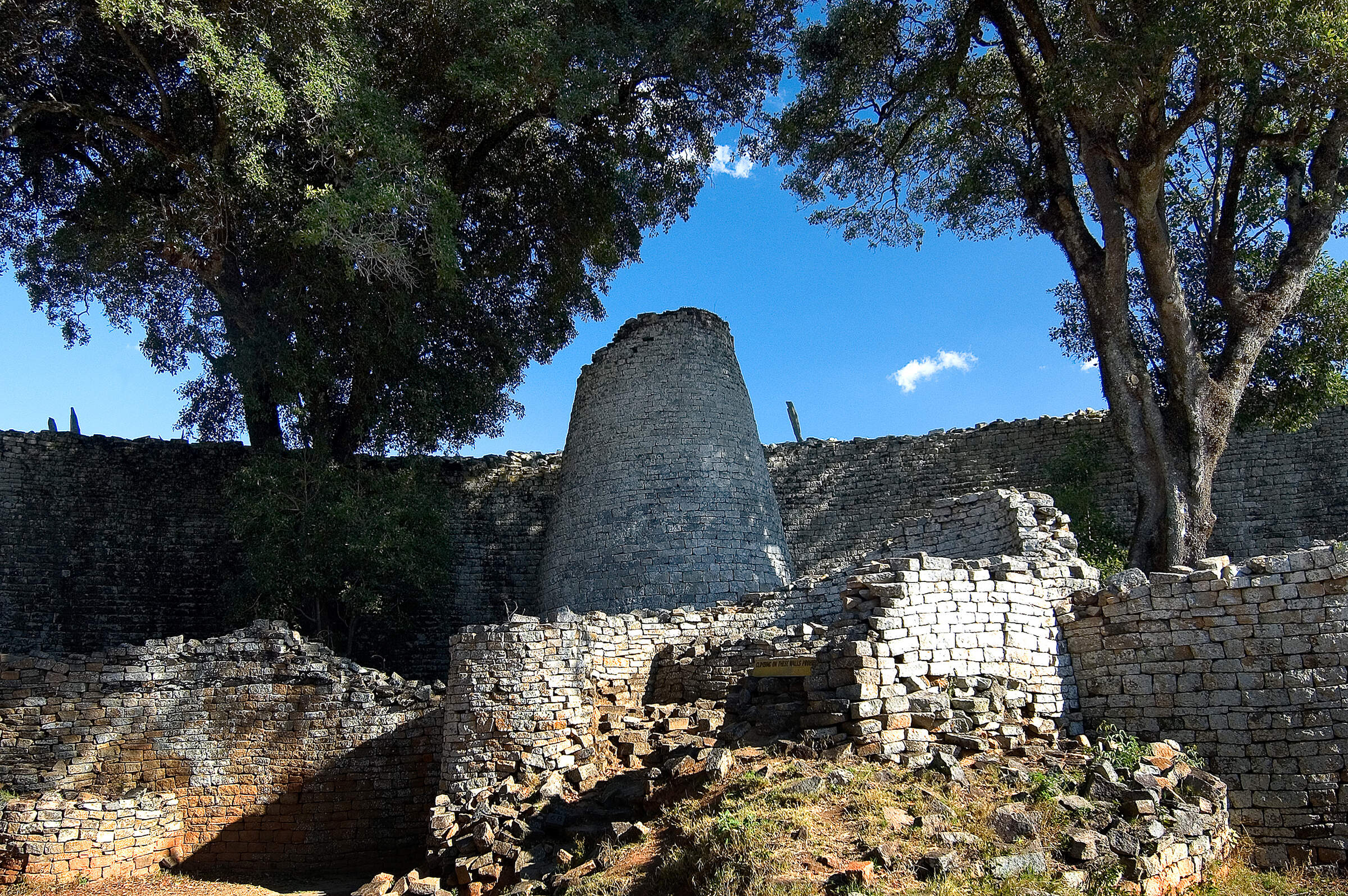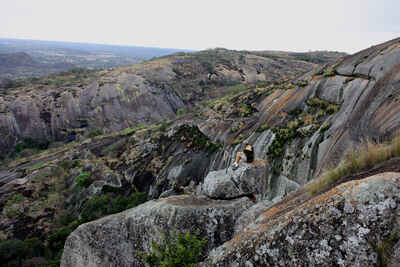
Matobo, joked King Mzilikazi, is translated as Bald Heads
You can discover the fascinating rock art created several years ago...
...and enjoy the views from the ‘World’s View’.
The national park is also one of the best places in the country to see Rhino.
Matobo National Park
Matobo National Park
This small, easily accessible national park contains some of the region's most arresting scenery.
The Matobo Hills are located to the south of Bulawayo, Zimbabwe’s second largest city. The area covers about 3,000km2 in total, of which about 400km2 is protected by the Matobo National Park, formerly the Matobo Hills National Park and before that the Rhodes Matopos National Park.
The landscape of Matobo is breath-taking, consisting of an abundance of small hills, massive granite outcrops and boulders which balance on top of each other, creating spectacular forms, known as kopjes or koppies. Looking at these kopjes you can see figures, similar as in clouds. Some of them are recognisable for everyone, e.g. ‘the camel’ or ‘the mother and child’; others are unique and exclusively reserved for your own imagination.
The Matobo National Park is right in the middle of the Matobo Hills area. The area was declared a National Park in 1926. It is a beautiful, but little visited area that’s easily reached either by road from either Bulawayo or Hwange National Park. This rugged landscape receives better rainfall than the surrounding areas. As a result it can sustain a high diversity of vegetation and a variety of animal species.

Safaris visiting Matobo
Just ideas, we'll always tailor-make a trip for you
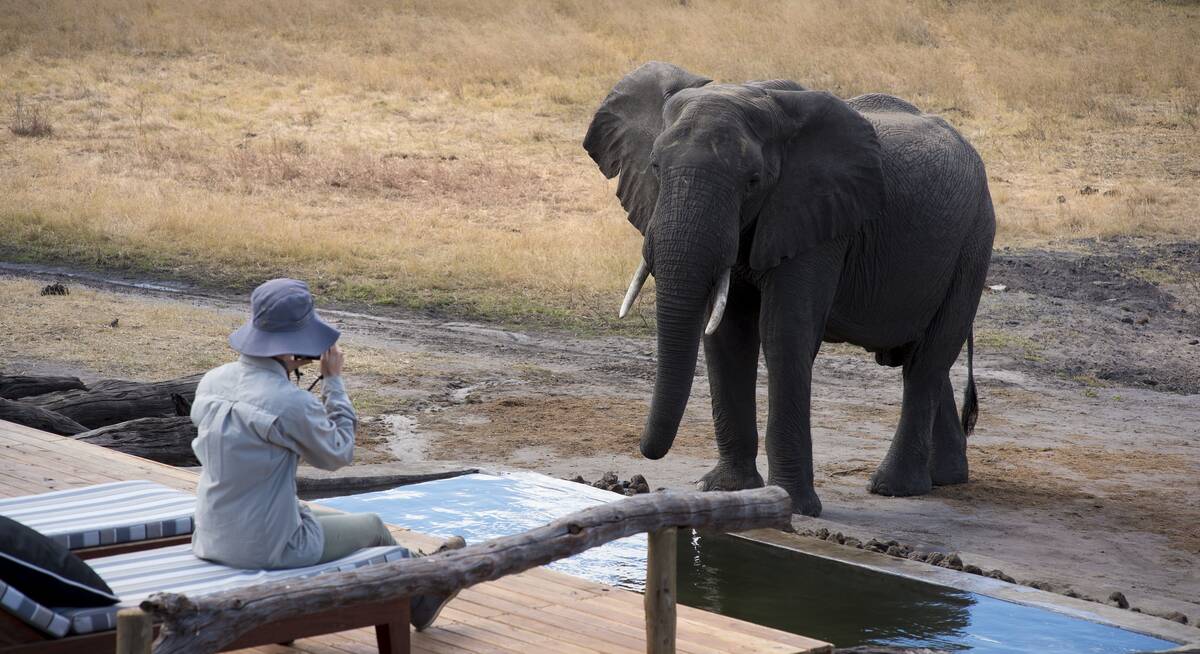
Ground Hornbill Safari
9 days • 3 locations
VICTORIA FALLS AIRPORT TO BULAWAYO AIRPORT
This Zimbabwean odyssey explores Hwange National Park from two small camps, renowned for their great guiding, before ending with insights into cultural history, a little luxury and first-class rhino tracking in the Matobo Hills.
US$5,540 - US$8,560 per person

Klipspringer Safari
8 days • 3 locations
VICTORIA FALLS AIRPORT TO BULAWAYO AIRPORT
An outstanding-value Zimbabwe safari exploring Victoria Falls and two contrasting locations in western Zimbabwe – Hwange and the Matobo Hills – giving you a real feel for Zimbabwe, its people and wildlife.
US$3,040 - US$3,570 per person
Most recent reviews of our safaris to Matobo
Click below to browse all 46 reviews from Matobo National Park. All from our travellers; all are in full & unedited.
Arrived 8 Jan 2025, 10 nights
"My Jan 2025 trip"
Overall rating: Excellent
Arrived 18 Dec 2024, 32 nights
"3-generation family tour"
Overall rating: Excellent
Arrived 4 Dec 2024, 5 nights
"Matobo National Park December 2024"
Overall rating: Excellent
Arrived 31 Aug 2024, 13 nights
"My Aug 2024 trip to Zimbabwe"
Overall rating: Excellent
Arrived 3 Aug 2024, 13 nights
"Zimbabwe Aug 2024 trip"
Overall rating: Good
Arrived 25 Jul 2024, 11 nights
"My Jul 2024 trip"
Overall rating: Excellent
Arrived 27 Apr 2024, 28 nights
"Our seventh trip to Africa"
Overall rating: Excellent
Arrived 2 Jan 2024, 11 nights
"My Jan 2024 trip"
Overall rating: Excellent
Arrived 24 Jul 2023, 14 nights
"Zimbabwe July/August 2023"
Overall rating: Excellent
Arrived 14 Sep 2022, 13 nights
"My Sep 2022 trip"
Overall rating: Excellent
Where to stay in Matobo
Our suggestions for safari camps in Matobo National Park
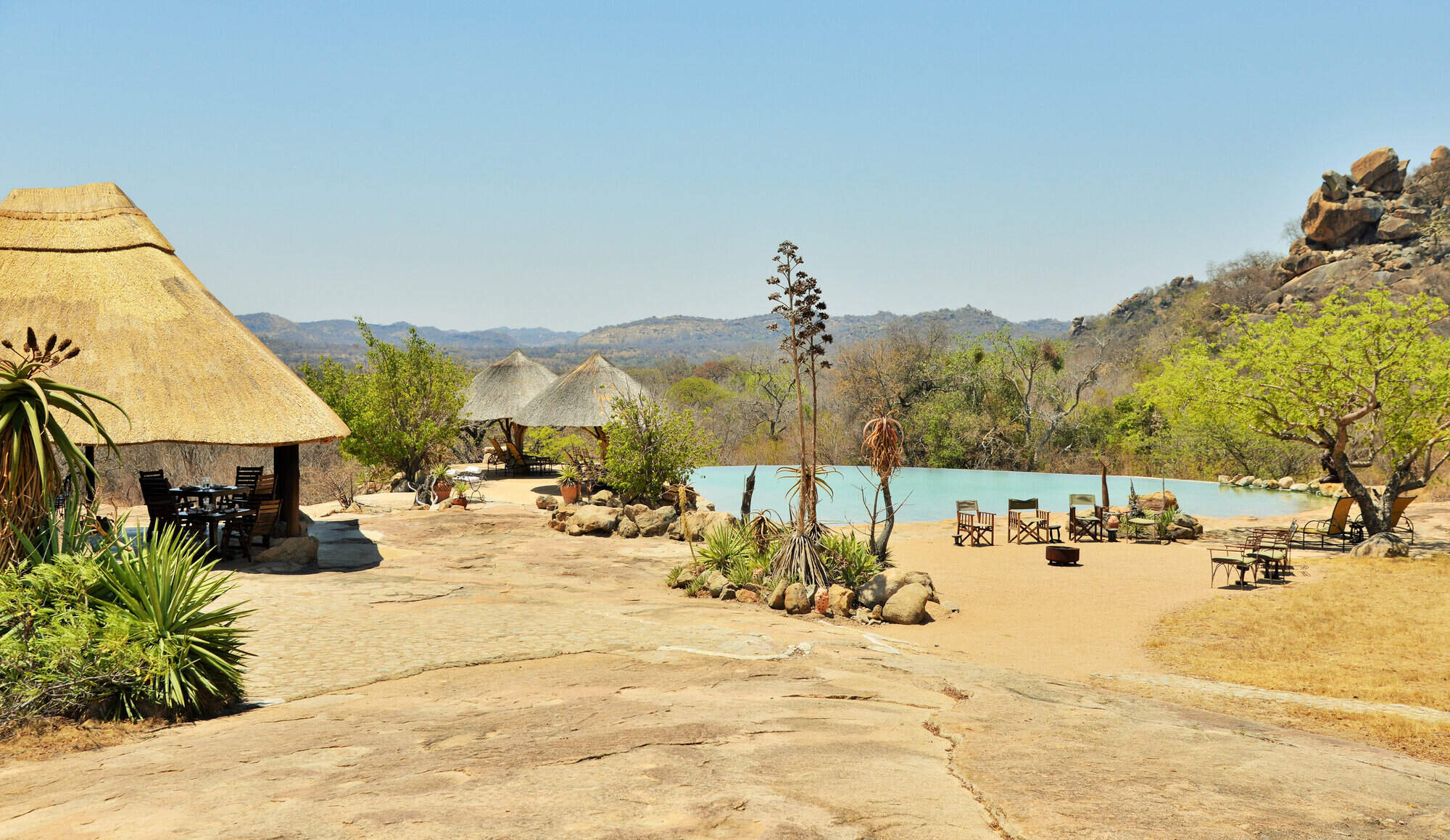
Amalinda Lodge
Imaginatively built into the massive granite kopjes of the Matobo Hills, Amalinda offers unique scenery, layered with history, and rhino tracking.
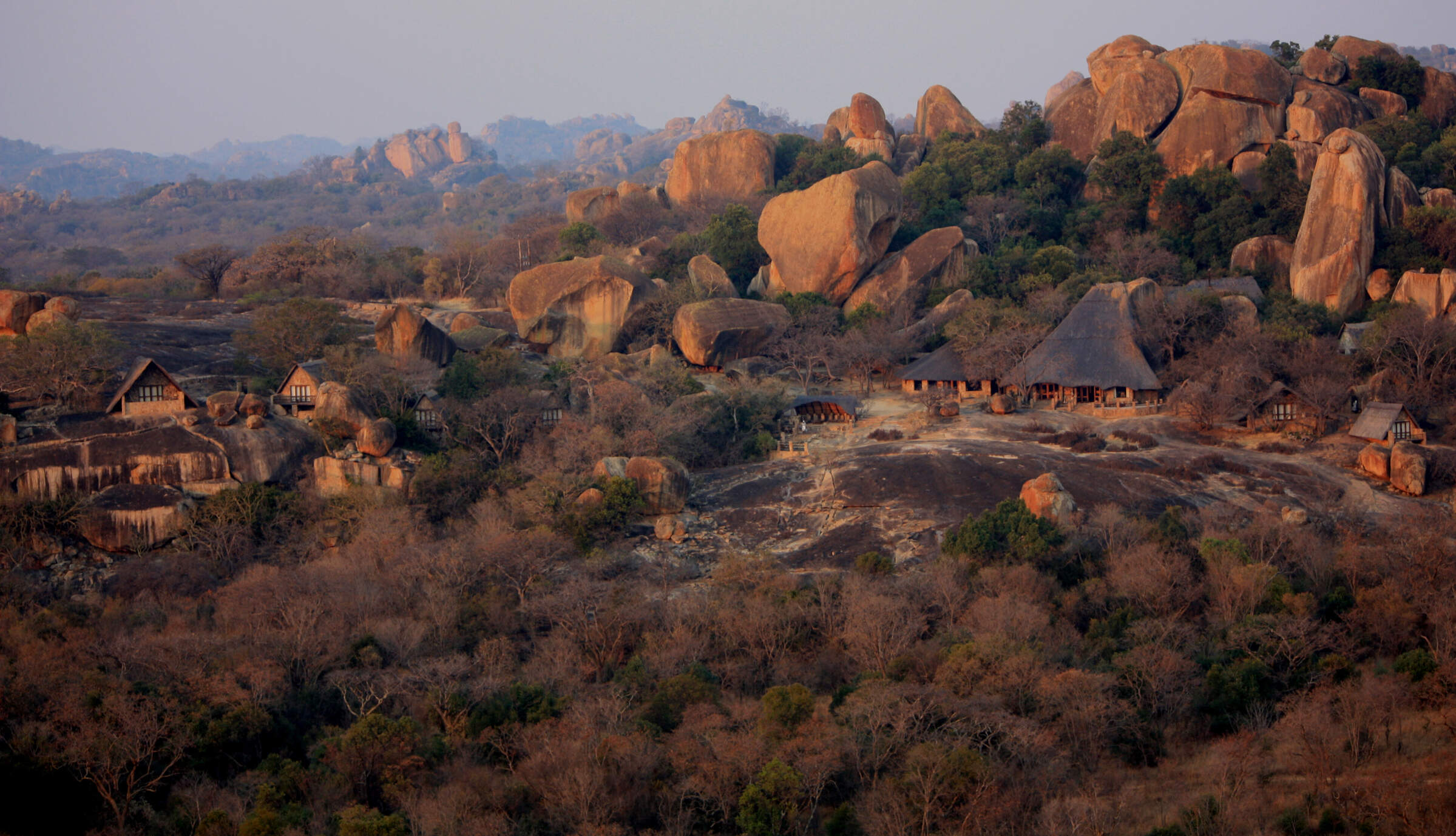
Big Cave Camp
Located on the top of a granite whaleback, Big Cave makes a simple base from which to explore Matobo Hills National Park.
Our travellers’ wildlife sightings in Matobo
This is their success for sightings in Matobo National Park. Click on a species for more detail. How we work this out.

96% success

87% success

50% success

45% success

32% success

26% success

5% success

0% success

0% success

0% success

0% success

0% success

0% success

0% success
When to go to Matobo National Park
Our month by month guide: What it's like to visit Matobo in Zimbabwe
Jan
Feb
Mar
Apr
May
Jun
Jul
Aug
Sep
Oct
Nov
Dec
Zimbabwe in January
January falls in the middle of Zimbabwe’s rainy season and is the wettest month of the year. Heavy rainfall occurs most days, flooding seasonal rivers and waterholes, with the occasional sunny spell.
With the high levels of precipitation the wildlife in the national parks becomes widely dispersed, taking advantage of the abundance of food and water, and is easily hidden by the thick, green bush.
While sightings of larger animals are possible, and many species drop their young at this time, game viewing is often sparse. However, many migratory species of bird arrive in Zimbabwe making it a peak month for birding.
The rains create incredibly sticky mud in Mana Pools National Park, preventing access and causing camps to close for the season. The majority of the camps in other parks remain open, with low rates attracting a smattering of visitors.
- Peak of the rainy season: hot & humid with heavy rain most days
- Bush exceptionally thick and green, with poor game viewing
- Species such as impala drop their young
- All camps in Mana Pools closed
- Very few visitors, and low rates at open camps
Our view
A time to avoid if possible
Weather in January
Zimbabwe in February
February remains well within Zimbabwe’s rainy season. Although total rainfall drops, relatively short thunderstorms can still be expected most afternoons. On the plus side, there is a greater chance of some sunshine in-between.
Much of the country remains waterlogged, closing access to Mana Pools and severely restricting walking safaris in other parks. While game drives and canoeing remain an option, the abundance of water disperses animals, and thick grass can make it difficult to spot larger species, but birding remains excellent. Conversely, this is a great time of year to view the landscape, and is excellent for photographers. Sporadic cloud cover and clear air can make for some spectacular sunsets too, particularly over Lake Kariba and the Zambezi River where the reflections off the water add to the beauty.
- Generally wet with frequent thunderstorms & hot humid days
- Poor wildlife viewing due to dispersed animals & thick bush
- Clear air, green landscapes & exceptional sunsets
- All camps in Mana Pools closed
- Very few visitors & low rates at camps that are open
Our view
This is not a great time to visit
Weather in February
Zimbabwe in March
March is the final month of Zimbabwe’s rainy season, when the rains start to trail off and sunny days become the norm. However, some days the clouds can still build, breaking into thunderstorms in the afternoon.
Mana Pools remains closed throughout the month but the majority of camps in Hwange, Matusadona and Gonarezhou remain open. Here, the landscape is green and alive, with migrant species of birds taking advantage of the abundant insect life. Larger animals remain elusive though, and walking safaris remain restricted.
By this time of year, the rains have normally trickled down to the Zambezi River and the flow of water over the Victoria Falls starts to increase, but without kicking up too much spray to obscure the views.
- Last month of the rainy season: hot, humid days with occasional storms
- Lush vegetation means good birding, but poor game viewing
- Views of the Victoria Falls improve
- All camps in Mana Pools closed
- Open camps have few visitors & low rates
Our view
This is not a great time to visit
Weather in March
Zimbabwe in April
April marks the end of Zimbabwe’s rainy season and the end of summer. Clear skies are the norm, with just the occasional shower. Temperatures start to drop, failing to reach 30ºC most days and dropping down to around 10ºC at night.
As the rain fades the landscape starts to dry out. While the vegetation remains thick and green, the soil in Mana Pools dries enough for camps to open, and the only camps to remain closed are the most remote bushcamps in Hwange. Although viewing of larger animals remains tricky, the improved weather starts to draw back visitors, as do prices significantly below those in the peak season.
The Zambezi River and flow of water over the Victoria Falls is at its highest, although large amounts of spray diminish views of the waterfall itself.
- Transitional period, with much lower rainfall & falling temperatures
- Wildlife is still dispersed & hard to see, but sightings improving
- Views of the Victoria Falls often obscured by spray
- Camps in Mana Pools open
- Visitors start to return & camps increase their rates
Our view
A good time to visit, with pros & cons
Weather in April
Zimbabwe in May
The first month in the dry season, May is also Zimbabwe’s first month of winter. If the rains are particularly late in a given year, you may catch the odd shower, but you can expect clear and sunny days the majority of the time. While it’s warm in the daytime, temperatures drop to single digits at night, so bring a warm jumper and gloves for early morning drives.
With the rain having cleared the air, the sky is bright blue, and it’s the best time of year for photography.
Even the most remote camps in Zimbabwe are now open. With the lack of rainfall, vegetation dies back significantly, and seasonal rivers return to sand. Not only does this open up the possibility of walking safaris, but wildlife viewing becomes much more reliable.
- Start of the dry season, with milder days and cold nights
- Game viewing significantly improves as vegetation dies back
- Vegetation starts to turn from green to brown
- Best time for photography with crystal clear air
- Visitors start to return; all camps open & rates increasing
Our view
A very good time to visit
Weather in May
Zimbabwe in June
During June you can virtually be guaranteed of dry and sunny days, although temperatures continue to drop, and can get close to freezing at night in Hwange National Park. Jumpers, jackets and gloves are strongly recommended for early mornings and evenings.
The opportunities for wildlife viewing improve throughout the month as the landscape rapidly dries, and the animals start to gather on the banks of the Zambezi River and around Hwange’s waterholes.
Water levels in the Zambezi River start to drop, reducing the amount of spray kicked up at the Victoria Falls and greatly improving visibility, but still allowing a full curtain of water to cascade over the edge.
- Middle of winter, with night-time temperatures close to freezing
- Game viewing significantly improves throughout the month
- Views of the Victoria Falls are at their best
- Noticeable increase in visitor numbers
- Camps considerably more expensive
Our view
A very good time to visit
Weather in June
Zimbabwe in July
July sits in the middle of Zimbabwe’s dry season. Although it’s warm at midday, temperatures are generally cold and in Hwange it’s been known to drop below freezing at night, with the lower-altitude Mana Pools feeling a bit warmer.
With wildlife clustering around the few remaining waterholes, sparse vegetation, and some of the best views of the Victoria Falls, this is one of the most popular times to travel, with camps charging peak season rates to reflect this. That said, visitor numbers to the country in general remain low, and outside of the Victoria Falls it’s rare for any areas to feel crowded.
- Middle of the dry season with almost no chance of rain
- Clear sunny days, but very cold nights
- Wildlife viewing good; game drives and walking safaris unrestricted
- Views of the Victoria Falls at their best
- Camps charging peak season rates
Our view
A very good time to visit
Weather in July
Zimbabwe in August
While August is the end of winter and temperatures are starting to creep up, mornings and nights are still cold, and game drives in open vehicles can feel particularly chilly. Well into the dry season, the landscapes will have mostly transformed from green to brown and wildlife viewing in Zimbabwe’s national parks is approaching its best. Due to dust kicked up into the atmosphere and smoke from bush fires you may start to notice a haze on the horizon, but this doesn’t significantly impact photography.
August is one of the most expensive months, and the pleasant weather and decent game viewing attracts lots of visitors. While the national parks rarely feel crowded, Victoria Falls accommodation can sell out a year in advance.
- Warm, sunny days but cold mornings & nights; almost no chance of rain
- Wildlife viewing nearly at its best
- Landscape turns brown, & an atmospheric haze develops
- All camps charging peak season rates
Our view
Fantastic: the very best time to visit
Weather in August
Zimbabwe in September
Temperatures in September rarely drop below 15ºC, but are yet to reach the oppressive highs of summer. It will normally have been five months since the last drop of rain, so antelope and elephants cluster around whatever water remains, with predators never too far away.
The landscape is very brown, and the haze building on the horizon takes some of the colour out of the sky, so while animal subjects are plentiful, the background is not ideal for photography.
The combination of incredible wildlife viewing, hot and sunny weather, and cheaper flights outside of the school holidays make this the most popular time of year to travel, and availability at the camps can become limited up to a year in advance.
- The best month for weather, with a pleasantly warm temperature range
- One of the best months for game viewing
- Victoria Falls starting to dry but still impressive on Zimbabwean side
- All camps are charging peak season rates
- Most popular time to travel, & space can be limited
Our view
Fantastic: the very best time to visit
Weather in September
Zimbabwe in October
October is the last month of the dry season with little chance of rain but building humidity. While the higher elevation of Hwange National Park limits temperatures to the 30s Celsius, they can easily top 40ºC in Mana Pools.
With little vegetation or water, wildlife is drawn to the few remaining water sources and viewing is at its best; visitors who brave the heat can be rewarded with some exceptional sightings, although haze in the air diminishes photos. Maximum visibility and dense wildlife concentrations can also make for very rewarding walking safaris, although the heat can make them uncomfortable.
Water levels in the Zambezi at the Victoria Falls drop significantly, and large stretches of the waterfall are a dry cliff-face – although it never dries completely. Camp rates remain at their peak, but visitor numbers drop as people avoid the heat.
- Last month of the dry season; very hot with building humidity
- Wildlife viewing at its very best
- Dust & smoke in the air diminish photographic opportunities
- Victoria Falls starting to look very dry
- Camp rates remain at their peak
Our view
A very good time to visit
Weather in October
Zimbabwe in November
November is a transitionary period, with high temperatures and humidity. While they can’t be predicted with any precision, the first rains normally arrive halfway through the month, in the form of thunderstorms lasting a few hours each day.
Early November is a popular time to travel as the camps drop their rates, so if you’re lucky you can get peak-season game viewing at low-season rates. This is a gamble though as if the rains do arrive, animals are no longer limited to a few dangerous waterholes and will disperse into the bush. While all the camps in Mana Pools intend to remain open, the rains can make the airstrips unusable so you may find yourself moved to a different park, a risk that increases through the month.
- Typically the start of the rains in Zimbabwe
- Temperatures & humidity levels remain high
- Wildlife viewing rapidly diminishes as the rains arrive
- Camps remain open, but risk early closure in Mana Pools
- Much cheaper time to travel as camps drop their rates
Our view
A good time to visit, with pros & cons
Weather in November
Zimbabwe in December
By December the rainy season has begun in earnest; this is one of the wettest months in Zimbabwe, with heavy thunderstorms most afternoons and occasionally continuous rain for a couple of days. While temperatures start to cool down the high levels of humidity can make the heat feel more oppressive.
With the rains comes an explosion of green growth, and the dust and smoke are washed out of the air. The resulting scenery – with the occasional bright blue skies – can be fantastic for photographers. Thick vegetation and plentiful water makes viewing of larger animals tricky, but with migratory species arriving the birding is at its best.
All camps in Mana Pools and the remote Hwange camps close, with those remaining open charging their lowest rates.
- One of the wettest months in Zimbabwe
- High temperatures & levels of humidity
- Wildlife viewing poor, but birding good
- Lush green landscapes & clear air; great for landscape photography
- All camps in Mana Pools closed
Our view
This is not a great time to visit
Weather in December
Matobo National Park: In detail
A guide to Matobo National Park
Geography of Matobo
Wildlife of Matobo
The rhinos can reliably be tracked on foot, and visiting in 2016 it only took us 20 minutes to find a small herd of white rhino. The black and white rhinos are on the CITES (the Convention on International Trade in Endangered Species of Wild Fauna and Flora) endangered list. Due to the high population of unique and endangered animals the park is designated as one of the country’s four Intensive Protection Zones. This allows the park to enjoy twenty-four hour protection. The beautiful sable antelope are often seen. So far, 12 species of antelope, among Kudu and Eland have been recorded. There are, however, no lion or elephant – meaning that you can walk freely amongst the hills and explore them on your own, making for a much more personal experience.
Elsewhere in the park, the more obvious game includes bushbuck, impala, zebra, kudu and giraffe, plus baboon and monkeys. Dassies, or rock hyrax, are very common and a density of leopards that is also reputed to be very high.
Birds of Matobo
For the best birding just raise your eyes to the top of the rock formation, as most birds are in their element here. Other common birds are fish eagle, martial eagle, francolin, secretary bird, weavers, pied crow and Egyptian geese.
History of the Matobo area
Pre-colonial era (before 1890)
Significant for this time was the arrival of the Nguni groups fleeing Zululand in the 1830s’. The Matobo Hills provided refuge for several ethnic groups at that time, such as the Karanga ethnic groups or the ancestors of the present Ndebele ethnic groups. Their arrival and settlement happened during the first half of the 19th century under the leadership of King Mzilikazi. The Ndebele group was one of the first groups to separate from the Nguni nation after they had entered the South African borders around the year 1500. It is this variety of ethnic groups that accounts for the cultural diversity and richness of Matobo Hills.
Colonial era (1891-1979)
The colonial era was characterized by the Pioneer Column in 1890. They raised the Union Jack at Fort Salisbury (today known as Harare) and moved southwest to Matabeland in search of gold. This met with resistance from the Ndebele and the confrontations ended in war between the ethnic groups and the European Settlers. During that time the hills played a significant role. They provided refuge and offered sanctuary.
Post-colonial era (1989 to present)
The imperialist Cecil Rhodes, after whom the country was called Rhodesia, led the European settlers into the country. He played a dominant role in southern Africa in the late 19th century. By 1895 he was controlling nearly all of the world’s diamonds and much of its gold, and effectively ruling over three colonial dependencies in the heart of Africa.
Cecil Rhodes loved the beautiful scenery of Matobo Hills, and chose the area as his final resting place – today known as ‘World’s View’. His grave is high up on the hill, marked by a brass plaque, and is a truly stunning spot to watch the sun set over the Matobo Hills.
The Matobo Hills area features some of the most significant sites illustrating important events in the history of Zimbabwe. Those events left enduring marks in the form of remains of early settlements, graves of great leaders, forts and many others.
Culture in the Matobo Hills area
Humans left visible traces such as a superb collection of rock art created several thousand years ago. San Bushmen have been inspired by the dramatic landscape and used the walls as their ‘canvases’. It is fascinating how accurate some of the paintings are. They demonstrate life over the past thousand years showing animals, people and hunting scenes. Furthermore the illustrations exhibit not only evolving artistic styles but also religious beliefs.
The Mwari religion, which is still practiced in the area. It focuses on the power of the rocks, especially those that are elevated, balanced, or protect springs and pools. Most of them are seen as the seat of god and ancestral spirits. Contact with the spiritual world can be made at sacred shrines within the hills, where the voice of Mwari is believed to be heard from the rocks. The ancestral spirits reside in forest, mountains, caves, hollowed trees and pools. The Mwari attach great respect to the environment because they argue, by despoiling it; they will be depriving their god and the spirits of a home to live in.
The most important examples of intangible heritage sites in the Matobo Hills area include such shrines as Njelele, Dula, Zhilo, Manyangwa and Wirirani/Wililani. These shrines are still used by the community and are also considered to be the most powerful tradition in southern Africa. The annual pilgrimage in august attracts more than a thousand pilgrims who gather around the natural features of the rocks and the adjacent terraces, where participants dance, perform rituals, eat and sleep during the 3-week long ceremonies. This strong persistence of indigenous beliefs and practices within the Matobo area gives it a continuing relevance to local communities.
UNESCO World Heritage Site
Criterion (iii): The Matobo Hills has one of the highest concentrations of rock art in southern Africa. The rich evidence from archaeology and from the rock paintings at Matobo provide a very full picture of the lives of foraging societies in the Stone Age and the way agricultural societies came to replace them.
Criterion (v): The interaction between communities and the landscape, manifested in the rock art and also in the long standing religious traditions still associated with the rocks, are community responses to a landscape.
Criterion (vi): The Mwari religion, centred on Matobo, which may date back to the Iron Age, is the most powerful oracular tradition in southern Africa.
Map of Matobo National Park
Choices for where to stay in Matobo National Park
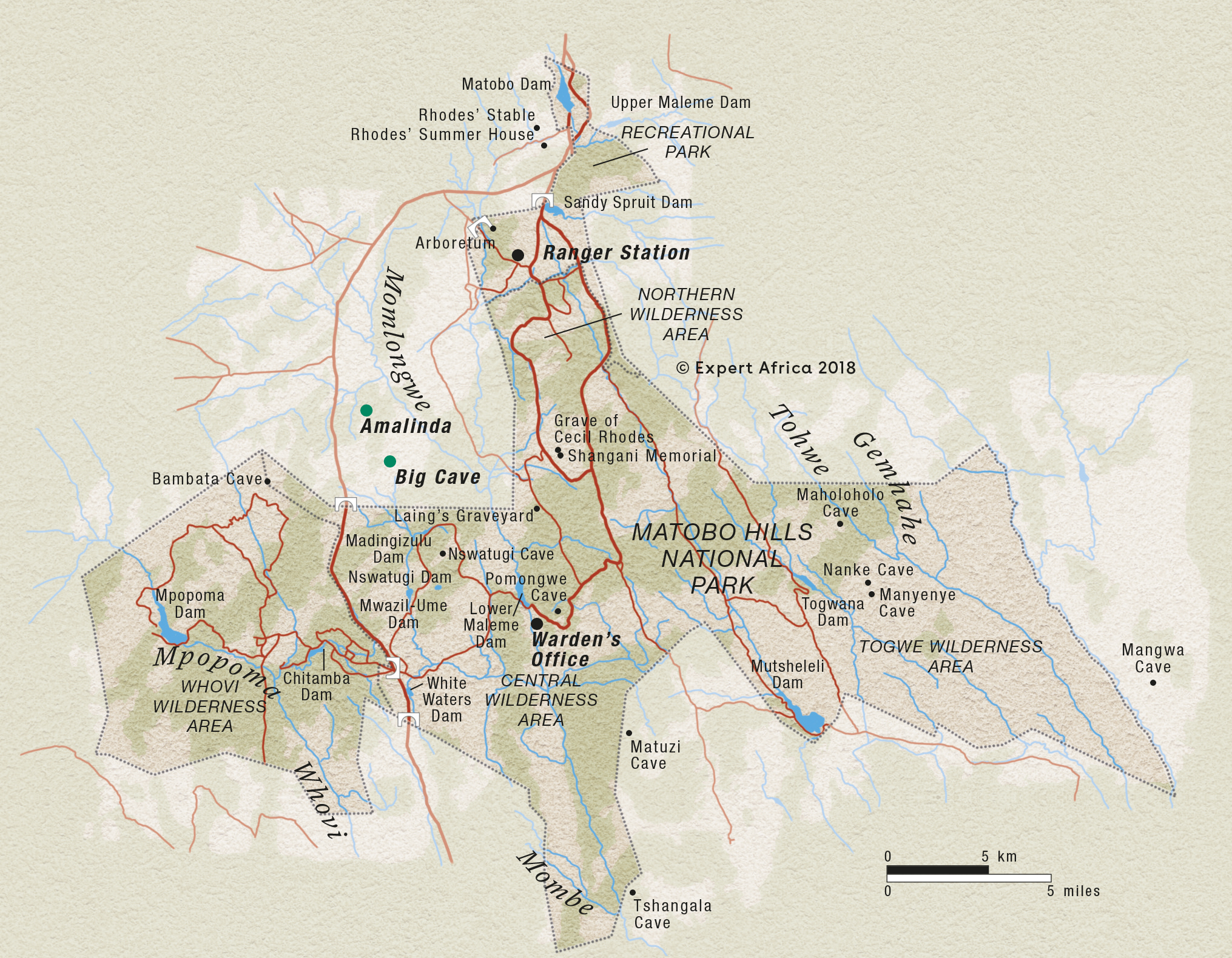
Matobo National Park: Safaris

Ground Hornbill Safari
9 days • 3 locations
VICTORIA FALLS AIRPORT TO BULAWAYO AIRPORT
This Zimbabwean odyssey explores Hwange National Park from two small camps, renowned for their great guiding, before ending with insights into cultural history, a little luxury and first-class rhino tracking in the Matobo Hills.
US$5,540 - US$8,560 per person

Klipspringer Safari
8 days • 3 locations
VICTORIA FALLS AIRPORT TO BULAWAYO AIRPORT
An outstanding-value Zimbabwe safari exploring Victoria Falls and two contrasting locations in western Zimbabwe – Hwange and the Matobo Hills – giving you a real feel for Zimbabwe, its people and wildlife.
US$3,040 - US$3,570 per person
Best 2 safari camps in Matobo National Park
The following are private lodges located just outside the park in the Matopos area, which stand out and are both close to one another. They provide incredible activities such as a great game density and rhino-tracking on foot. Ask us for more details of what's where, and what's likely to suit you best!

Amalinda Lodge
Imaginatively built into the massive granite kopjes of the Matobo Hills, Amalinda offers unique scenery, layered with history, and rhino tracking.

Big Cave Camp
Located on the top of a granite whaleback, Big Cave makes a simple base from which to explore Matobo Hills National Park.

Looking for inspiration on where to travel next?
Visit our trip chooser to explore your options and find inspiration for your perfect African adventure
Inspire me